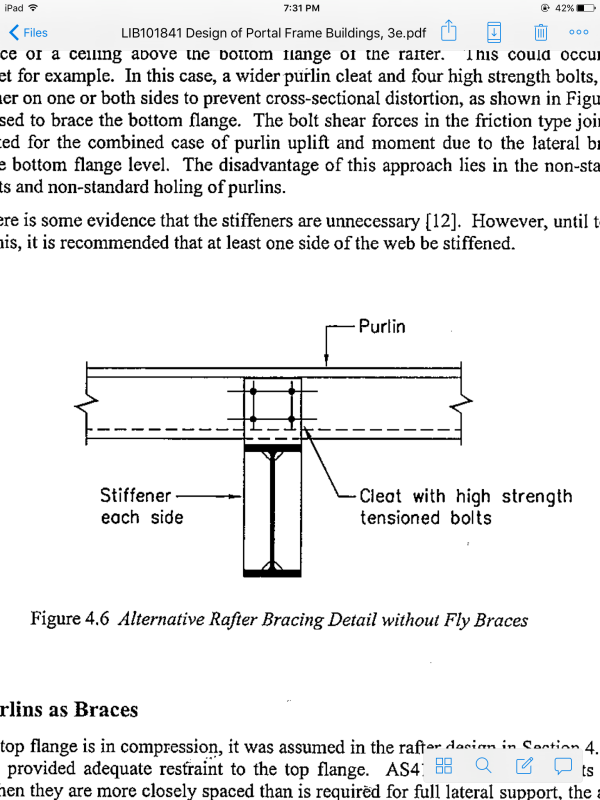johannes17
Structural
- Jul 23, 2015
- 6
Hi all
This question is similar to a previous one of mine, but with some difference.
I am designing a standard steel portal frame (elastic analysis) with the following details:
1. Total clear span = 12m (duo pitch portal with 15 degree roof slope)
2. Haunches at the eaves and apex (ex IPE 180 AA sections with lengths = 10% of total span);
3. No kneebracing has been used (to reduce fabrication and erection time)
4. Purlins spaced at 1.5m along slope (100x50x20x2mm CFLC);
5. Rafters = IPE 180 AA
6. Columns = IPE 180 AA
How would I determine the rafter's effective length for lateral-torsional buckling (Le) if no kneebracing is used? In all the examples and publications I have read kneebracing is usually used at least at the sharp ends of the haunches (close to eaves and to apex), yet I have seen many portal frames in practice that use no kneebracing. Since I would like to optimize my design in all ways possible I would like to omit them if possible.
Is there a way of checking the added resistance to LTB due to the haunches and web stiffeners at the sharp ends of the haunches?
This question is similar to a previous one of mine, but with some difference.
I am designing a standard steel portal frame (elastic analysis) with the following details:
1. Total clear span = 12m (duo pitch portal with 15 degree roof slope)
2. Haunches at the eaves and apex (ex IPE 180 AA sections with lengths = 10% of total span);
3. No kneebracing has been used (to reduce fabrication and erection time)
4. Purlins spaced at 1.5m along slope (100x50x20x2mm CFLC);
5. Rafters = IPE 180 AA
6. Columns = IPE 180 AA
How would I determine the rafter's effective length for lateral-torsional buckling (Le) if no kneebracing is used? In all the examples and publications I have read kneebracing is usually used at least at the sharp ends of the haunches (close to eaves and to apex), yet I have seen many portal frames in practice that use no kneebracing. Since I would like to optimize my design in all ways possible I would like to omit them if possible.
Is there a way of checking the added resistance to LTB due to the haunches and web stiffeners at the sharp ends of the haunches?

